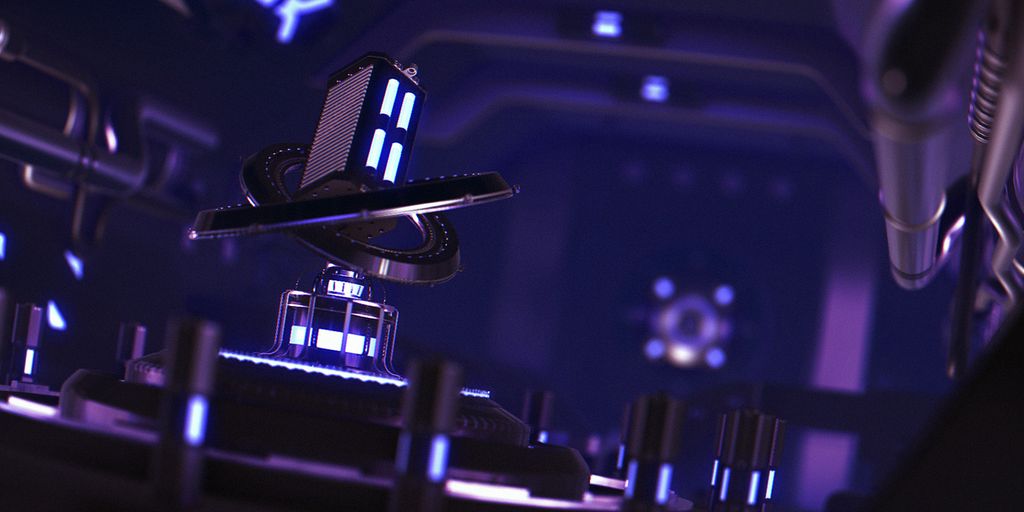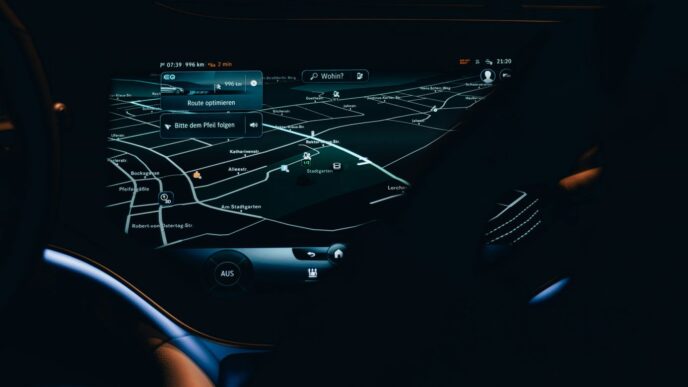So, 2025 is just around the corner, and it looks like it’s going to be a pretty wild ride for technology. We’re talking about some serious changes that could really shake things up in a lot of different areas. Think about how we work, how we get around, and even how we understand the universe. It’s not just about cool new gadgets, though. There are also some big questions we’ll need to figure out, like how to make sure these new things help everyone and don’t cause more problems. Get ready, because the next year might just be one we look back on as a real turning point for our future, full of amazing progress and some tricky moments too.
Key Takeaways
- AI is going to keep changing things, with new smart programs helping out in industries and improving how we search for stuff online. We also need to think about what’s right and wrong as AI gets more powerful.
- Computing is set for a big technological breakthrough. Quantum computers are getting better, and scientists are trying to find ways to make electronics work super efficiently without needing to be really cold. Plus, sensors are getting way more advanced.
- Space exploration will see some cool new things thanks to the Vera C. Rubin Observatory. We’re hoping to learn more about dark matter and just get a better look at the southern sky.
- Materials science is focusing on being more green. There’s a push for new ways to make things like steel that are better for the planet, and manufacturing processes are becoming more eco-friendly to cut down on pollution.
- Health and medicine are also getting a technological breakthrough. We’re seeing new long-lasting medicines for things like HIV, and doctors are getting better at tailoring treatments just for you. Biotechnology is playing a huge part in fighting diseases.
Artificial Intelligence’s Next Technological Breakthrough
AI is changing fast, and 2025 looks to be a big year. We’re not just talking about slightly better chatbots; we’re talking about changes that could really shake things up across different industries. It’s exciting, but also a little scary, to think about how much things could change in just a few years.
AI Agents Reshaping Industries
Imagine AI that isn’t just answering questions, but actually doing things. That’s the direction we’re heading. AI agents will start taking over tasks that humans used to do, especially in areas like customer service, data analysis, and even some aspects of healthcare. Think about scheduling appointments, managing inventory, or even helping doctors diagnose illnesses. It’s not about replacing people entirely, but about making things more efficient and freeing up humans to focus on more creative or complex work. This shift will require businesses to adapt and embrace AI to stay competitive.
Generative AI Search Advancements
Searching the internet is about to get a whole lot smarter. Instead of just getting a list of links, imagine asking a question and getting a complete, AI-generated answer that pulls information from all over the web. Generative AI is making search engines more like personal assistants, able to synthesize information and provide tailored responses. This could change how we learn, research, and even make decisions. It also raises questions about the future of websites and content creation, as AI could potentially bypass traditional sources of information. The impact on SEO and content strategy will be significant.
Ethical Considerations in AI Development
As AI gets more powerful, we have to think about the ethical implications. Issues like bias in algorithms, job displacement, and the potential for misuse are becoming increasingly important. We need to develop guidelines and regulations to ensure that AI is used responsibly and for the benefit of everyone. This includes things like transparency in AI decision-making, protecting people’s data, and making sure that AI systems are fair and unbiased. It’s a complex challenge, but one that we can’t afford to ignore. The development of ethical AI is crucial for its long-term success and acceptance.
Revolutionizing Computing with a Technological Breakthrough
Computing is on the verge of some serious changes. It feels like every day there’s a new headline about some crazy advancement. From quantum leaps to materials that defy the rules, it’s a wild time to be following this stuff. The World Economic Forum’s Top 10 Emerging Technologies report has been pretty spot-on for years, so it’s worth paying attention to what they’re saying.
Quantum Computing’s Expanding Horizons
Quantum computing is no longer just a theoretical concept; it’s rapidly becoming a practical reality. Companies are already using quantum algorithms to tackle problems that are impossible for regular computers. Think about optimizing high-frequency trading in finance, streamlining global supply chains, or even accelerating drug discovery. It’s kind of mind-blowing. You don’t even need to wait years to get involved. Cloud-based platforms are making quantum computing accessible to anyone who wants to experiment. It’s all about finding the right optimization problems to solve.
Efficient Conductivity Without Extreme Cooling
Imagine electronics that don’t need crazy cooling systems. That’s the promise of new materials research. Scientists are hunting for combinations that allow efficient conductivity without needing extreme temperatures. If they crack this, it could change everything, from making chips more efficient to creating advanced sensors. Of course, any big claim needs to be checked and double-checked, but the potential is huge. It could lead to efficient chips and more.
The Future of Advanced Sensors
Advanced sensors are becoming more and more important. They’re showing up everywhere, from our phones to industrial equipment. These sensors are getting smaller, more powerful, and more energy-efficient. This is opening up new possibilities in areas like:
- Environmental monitoring: Sensors can track pollution levels, detect leaks, and monitor climate change.
- Healthcare: Wearable sensors can monitor vital signs, detect diseases early, and personalize treatment.
- Autonomous vehicles: Sensors are essential for self-driving cars to navigate safely.
It’s not just about the sensors themselves, but also the AI that processes the data they collect. This combination is creating a whole new level of awareness and control.
Transformative Technological Breakthrough in Space Exploration
Space exploration is always pushing boundaries, and 2025 is no different. We’re seeing some seriously cool stuff happening that’s changing how we understand the universe. It’s not just about rockets and astronauts anymore; it’s about using new tech to unlock cosmic secrets.
Vera C. Rubin Observatory’s Discoveries
The Vera C. Rubin Observatory in Chile is a game-changer. Equipped with the largest digital camera ever built for astronomy, it’s capturing a decade-long scan of the southern sky. This isn’t just taking pretty pictures; it’s gathering massive amounts of data that scientists will be analyzing for years to come. Think of it as a time-lapse movie of the universe, showing us how things change over vast stretches of time. The sheer volume of information is mind-boggling, and it’s all thanks to this amazing piece of tech. It’s like upgrading from a flip phone camera to a professional DSLR – the difference is night and day.
Unveiling Dark Matter’s Secrets
One of the biggest goals of the Rubin Observatory is to shed light on dark matter. We know it’s out there because of its gravitational effects, but we have no clue what it’s made of. The observatory’s data will help us map the distribution of dark matter in the universe, giving us clues about its nature. It’s like trying to find a ghost – you can’t see it, but you can see how it affects things around it. If we can figure out what dark matter is, it would revolutionize our understanding of physics and the cosmos. Plus, NASA’s 2025 Spinoff report highlights how space exploration tech often leads to unexpected benefits here on Earth.
New Insights into the Southern Sky
The southern sky is less explored than the northern sky, so the Rubin Observatory is opening up a whole new window on the universe. We’re talking about potentially discovering new galaxies, supernovas, and other cosmic phenomena that we’ve never seen before. It’s like exploring a new continent – you never know what you’re going to find. The observatory’s wide-field view and deep imaging capabilities mean it can see things that other telescopes miss. This could lead to some major breakthroughs in our understanding of the cosmos. It’s a really exciting time for astronomy, and the Rubin Observatory is right at the center of it all.
Sustainable Technological Breakthrough in Materials Science
Okay, so materials science is getting a green makeover, and honestly, it’s about time. We’re talking about some serious changes in how we make stuff, aiming to cut down on all the pollution and waste. It’s not just about feeling good; it’s about making things that last and don’t trash the planet in the process. I saw something about AI in material science that could really speed things up.
Innovations in Green Steel Production
Green steel is the new buzzword, and for good reason. Traditional steelmaking is a huge source of carbon emissions, but some companies are trying to do things differently. The big idea is to use hydrogen instead of coal in the production process. This cuts down on carbon emissions big time. It’s still early days, but the potential is huge. I read that a Swedish startup is leading the charge, and that’s pretty cool. Here’s a quick look at the potential impact:
- Reduced carbon footprint: Up to 95% reduction compared to traditional methods.
- Renewable energy integration: Uses hydrogen produced from renewable sources.
- Circular economy: Focus on recycling and reusing steel.
Eco-Friendly Manufacturing Processes
It’s not just about the materials themselves, but also how we make them. Eco-friendly manufacturing is all about reducing waste, using less energy, and finding ways to reuse materials. Think closed-loop systems where waste from one process becomes the input for another. It’s like nature’s way of doing things, but in a factory. Plus, there’s a big push for using less toxic chemicals and finding safer alternatives.
Reducing Environmental Impact
Ultimately, all these changes are about reducing the impact we have on the environment. It’s about making things in a way that doesn’t pollute the air, water, or soil. It’s about thinking long-term and making sure we’re not just kicking the can down the road for future generations. This includes:
- Minimizing waste generation.
- Conserving natural resources.
- Promoting sustainable practices throughout the supply chain.
Advancements in Health and Medical Technological Breakthrough

Health and medicine are on the cusp of some pretty amazing changes. It’s not just about incremental improvements anymore; we’re talking about potential game-changers that could redefine how we approach disease prevention and treatment. From personalized therapies to innovative drug delivery systems, the future of healthcare looks incredibly promising. I was at the 2025 Digital Health Technology and Regulation Conference and the buzz was palpable.
Long-Acting HIV Prevention Medications
One of the most exciting developments is the emergence of long-acting HIV prevention medications. Imagine an injection that provides protection for six months! This could be a total game-changer, especially for women and girls. Clinical trials have shown incredible results, and the potential to curb the spread of HIV is huge. It’s not just about the science; it’s about making prevention more accessible and convenient for everyone.
Personalized Medicine’s Evolution
Personalized medicine has been a buzzword for a while, but it’s finally starting to feel like a reality. We’re moving beyond the one-size-fits-all approach to healthcare, and it’s about time. The ability to tailor treatments based on an individual’s genetic makeup, lifestyle, and environment is revolutionary. It means more effective treatments, fewer side effects, and a better overall experience for patients. Here are some key areas of progress:
- Genomic sequencing: Becoming faster and cheaper, making it more accessible for routine clinical use.
- Data analytics: Sophisticated algorithms are helping us make sense of complex patient data.
- Targeted therapies: Drugs designed to target specific genetic mutations or pathways.
Biotechnology’s Impact on Disease Treatment
Biotechnology is playing an increasingly important role in disease treatment. From gene editing to immunotherapy, the possibilities seem endless. We’re seeing breakthroughs in areas like cancer treatment, genetic disorders, and infectious diseases. It’s not just about treating symptoms; it’s about addressing the root cause of disease. For example, new generative AI models are helping researchers design novel proteins and antibodies with therapeutic potential. It’s a brave new world, and I’m excited to see what the future holds.
Urban Mobility’s Technological Breakthrough
Urban mobility is on the cusp of a major transformation, driven by exciting new technologies. It’s not just about getting from point A to point B anymore; it’s about doing it efficiently, sustainably, and safely. We’re seeing a convergence of electric vehicles, AI, and innovative infrastructure that promises to reshape how we move around our cities. The integration of connected traffic lights is a great example of how technology can optimize urban mobility.
Electric Vertical Takeoff and Landing Aircraft
The idea of flying cars has been around for ages, but now it’s closer to reality than ever before. Electric Vertical Takeoff and Landing (eVTOL) aircraft are being developed to provide a new mode of transportation within cities. These aircraft offer the potential to bypass congested roadways and reduce travel times significantly. Think of it as an aerial taxi service, zipping you across town in a fraction of the time it would take on the ground. The global robotics market is projected to expand significantly in the coming years.
Commercial Operation of eVTOLs
While the technology is promising, getting eVTOLs into commercial operation is a complex undertaking. It involves regulatory approvals, infrastructure development (think vertiports), and ensuring public safety. Several companies are actively working towards this goal, with plans to launch commercial services in select cities within the next few years. The key will be demonstrating the safety and reliability of these aircraft to gain public trust and acceptance. Here’s a quick look at some of the challenges:
- Developing robust safety protocols.
- Creating a network of vertiports.
- Managing air traffic in urban environments.
- Addressing noise pollution concerns.
Redefining City Transportation
Beyond eVTOLs, other innovations are contributing to the transformation of city transportation. This includes advancements in autonomous vehicles, smart traffic management systems, and the integration of various modes of transportation into a seamless network. Imagine a future where you can use a single app to plan and pay for your entire journey, combining public transit, ride-sharing, and even eVTOL flights. This integrated approach has the potential to revolutionize urban mobility, making it more convenient, efficient, and sustainable. The development of long-acting HIV prevention medications is another example of a significant technological advancement.
Global Competition in Technological Breakthrough
The race to technological dominance is heating up, and it’s no longer a one-horse race. We’re seeing significant shifts in who’s leading the charge, particularly in areas like AI. It’s a complex interplay of investment, innovation, and strategic priorities, and the next few years will be crucial in determining the long-term landscape.
Chinese Frontier Models Surpassing US Counterparts
Okay, so here’s the deal: China is making some serious moves in AI. It’s not just about quantity; they’re starting to show real quality too. Some Chinese AI models are now outperforming their US counterparts in specific areas. This is a big deal because it suggests a potential shift in the balance of power in AI development. It’s not to say the US is falling behind completely, but the competition is definitely getting fiercer. We’re seeing this play out in various sectors, from facial recognition to natural language processing. It’s a wake-up call for everyone involved.
Investment in AI Funding
Money talks, right? Well, China is putting its money where its mouth is when it comes to AI. The level of investment in AI funding is staggering. It’s not just government funding either; there’s a ton of private investment pouring into AI startups and research institutions. This influx of capital is fueling rapid innovation and allowing Chinese companies to experiment with new approaches to AI development. It’s creating a fertile ground for breakthroughs and giving them a significant edge in the global AI race. This is impacting top tech stocks globally.
Leadership in Global AI Patents
Patents are a good indicator of who’s actually inventing stuff, and China is leading the way in global AI patents. The sheer number of AI patents filed by Chinese entities is impressive. This suggests that they’re not just good at implementing existing AI technologies; they’re also actively creating new ones. This is important because it means they’re building a strong foundation for future AI innovation and potentially setting the standards for the next generation of AI technologies. It’s a long game, and they’re playing it smart. For example, they are making breakthroughs in AI agents and their applications.
Looking Ahead: What 2025 Means for All of Us
So, as we wrap things up, it’s pretty clear 2025 is going to be a big deal for technology. We’re talking about changes that will really shake things up, in good ways and maybe some not-so-good ways. It’s not just about cool new gadgets; it’s about how we live, work, and even think. There will be amazing progress, but also some bumps in the road. We’ll need to figure out how to handle the new stuff that comes our way. It’s going to be a year we remember, a real turning point for what’s next.
Frequently Asked Questions
What are AI agents and why are they important for 2025?
AI agents are like smart computer programs that can do many tasks on their own, even complicated ones. They are expected to become a big part of how we use technology in 2025, moving beyond simple chatbots to handle more complex jobs.
What is quantum computing and what does 2025 hold for it?
Quantum computing is a new way of computing that uses the strange rules of tiny particles to solve problems much faster than regular computers. In 2025, we expect to see more progress in making these powerful computers work for real-world tasks.
What is the Vera C. Rubin Observatory and what will it discover?
The Vera C. Rubin Observatory is a new telescope in Chile that will take pictures of the southern sky for ten years. It will help scientists learn more about dark matter, which is a mysterious substance that makes up a big part of the universe.
What is ‘green steel’ and why is it important?
Green steel production is a way to make steel that causes less harm to the environment. It’s about using cleaner methods and materials to reduce pollution and waste, helping us have a more sustainable future.
What are long-acting HIV prevention medications?
Long-acting HIV prevention medications are drugs that can protect people from getting HIV for a long time with just one dose or a few doses. This makes it easier for people to stay healthy and prevents the spread of the virus.
What are eVTOLs and how will they change city travel?
eVTOLs are like electric helicopters that can take off and land straight up and down. They are designed to fly people around cities, making travel faster and easier, especially in crowded areas.














